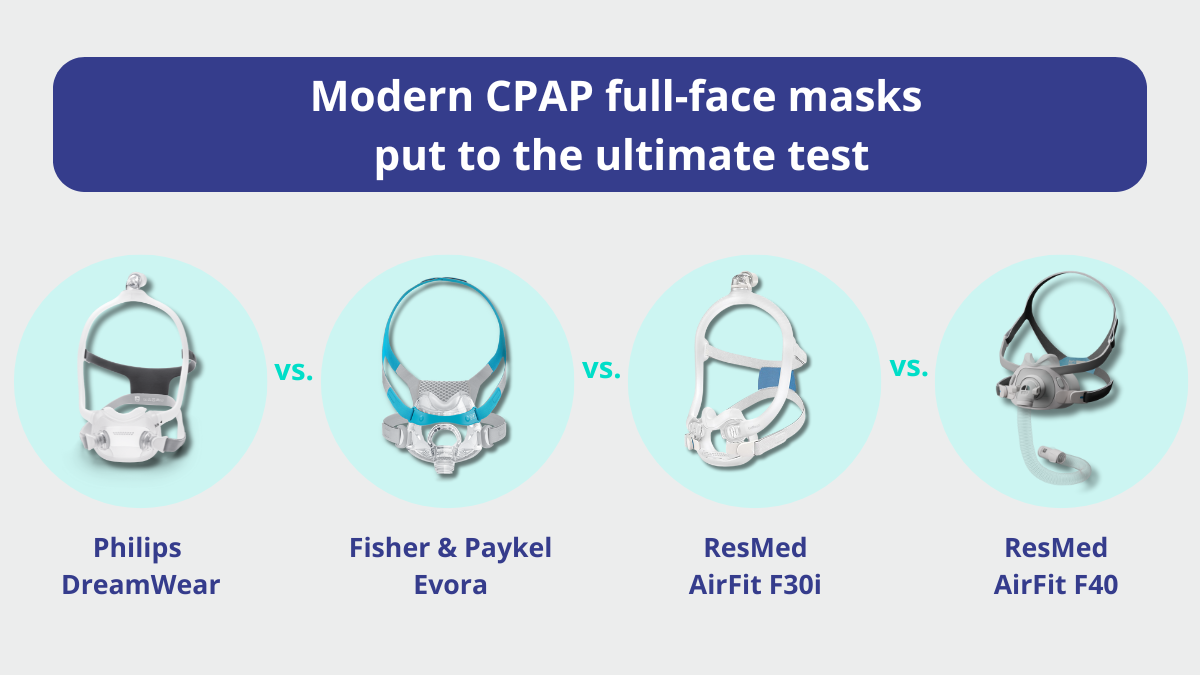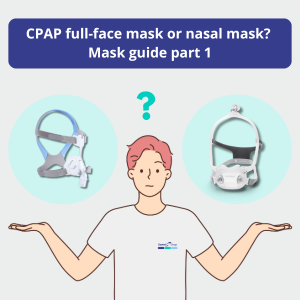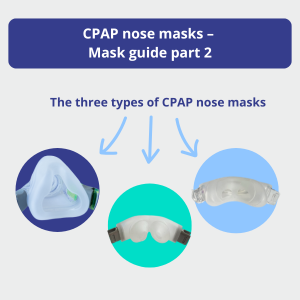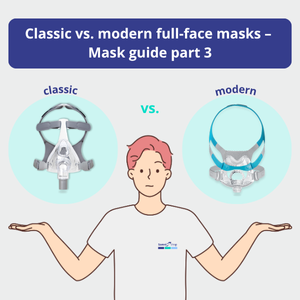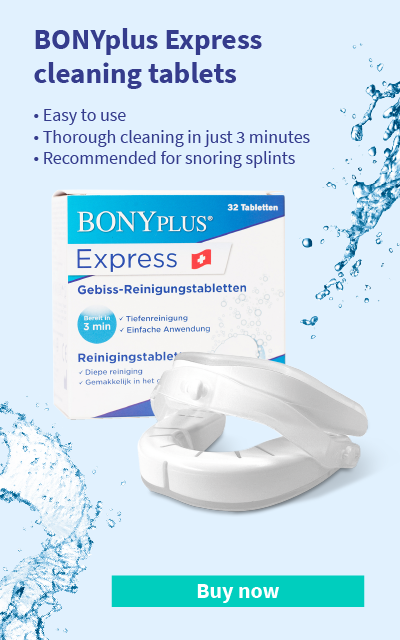When it comes to CPAP therapy, choosing the right mask is crucial for a restorative night’s sleep. We’ve tested the most popular reduced full-face masks that cover the mouth and nose – without forehead support and with an “under-the-nose” design. This feature is what makes them particularly attractive, because there is less contact with the bridge of the nose, which makes them a more comfortable option.
We decided to test out the following four full-face masks, as they’re particularly popular with our customers: Philips DreamWear full-face mask, Fisher & Paykel Evora full-face mask, ResMed AirFit F30i full-face mask and ResMed AirFit F40 full-face mask.
The four reduced full-face masks put to the test
We assess these masks based on six central criteria, which are important for both purchase and use, with the aim of helping you find the right mask for your individual requirements.
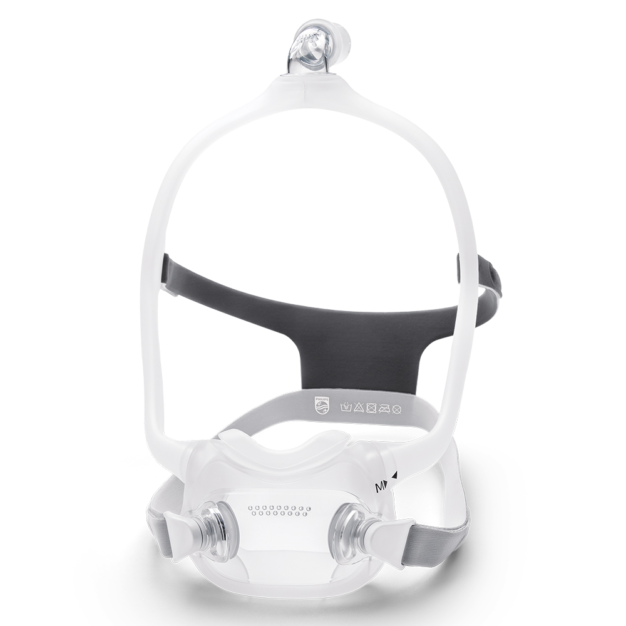
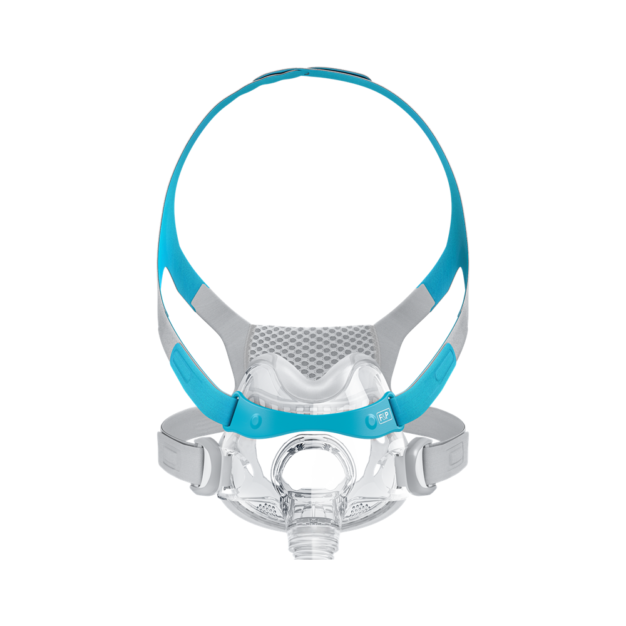
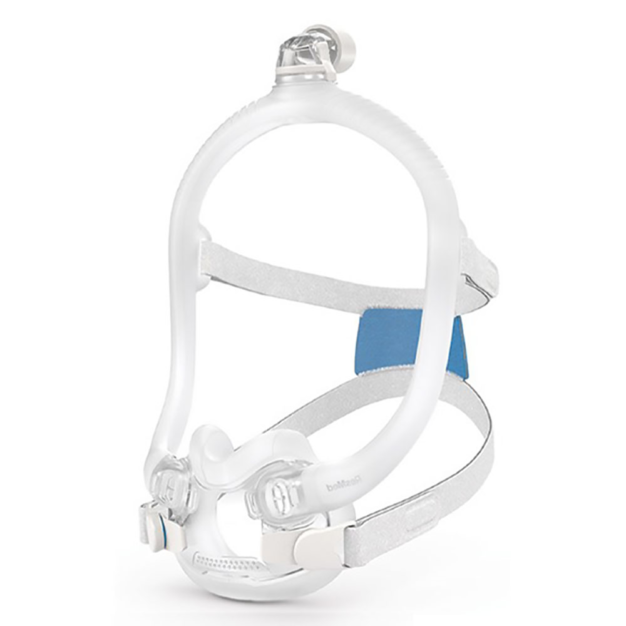
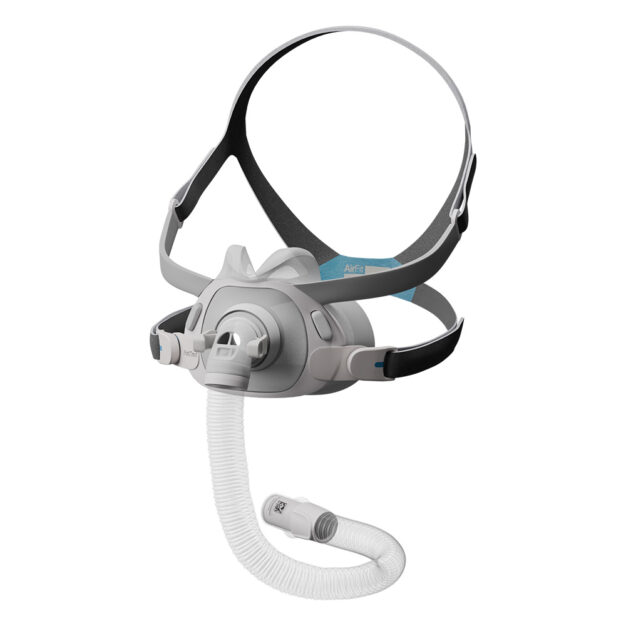
Assessment criterion 1: Comfort & fit
Let’s start with our first assessment criterion: comfort & fit. It’s the most important thing about a CPAP mask – how does it feel? Does it fit well? Does it cause pressure points?
- A lot of users praise the comfortable fit of the DreamWear thanks to the soft, flexible silicone frame through which the air is guided. The over-head hose connection provides increased freedom of movement. However, some users report pressure points underneath the nose, especially if the mask is too tight.
- The design of the AirFit F30i with over-head hose connection is apprecaiated for the freedom of movement it offers, making it very suitable for people who suffer from claustrophobia. However, some users find the cheek straps too tight, and there are reports of problems with the seal.
- The Evora and AirFit F40 both have a classic design in terms of the hose connection being at the bottom. The Evora gets a lot of praise for its soft silicone cushion and the breathable head strap that significantly improves the comfort level. The AirFit F40 does even better here: For a full-face mask, it’s extremely light, the cushion adapts well to the face, and there are barely any reports of pressure points.
An important tip: Unlike the DreamWear and Evora, there are no trial packs with several mask cushion sizes for the AirFit F30i and F40 available. The option to try out different sizes reduces purchasing errors and significantly increases comfort.
Assessment criterion 2: Seal & leaks
A good seal is essential for effective CPAP therapy. Leaks can not only be irritating, but can also impair therapy.
- Opinions on the DreamWear are mixed. Some users praise the good seal, but at higher pressures (over 15 cmH2O), there are often reports of leaks that can even blow into the eyes. Restless sleepers who move around a lot are particularly affected by this.
- Similarly to the DreamWear, the AirFit F30i provides a good seal in a side-sleeping position. However, leaks may occur when changing positions or at higher pressures.
- The Evora and AirFit F40 both score points thanks to their increased stability and leak-tightness, particularly with restless sleepers and higher therapy pressures. In this area, they are clearly ahead of the DreamWear and AirFit F30i.
Assessment criterion 3: Mask type & design features
- The over-head hose connection – as seen in the DreamWear and AirFit F30i – effectively prevents the hose from getting tangled, especially when using a CPAP hose holder.
- Three of the four masks use magnetic clips. These are certainly practical, but in rare cases may be problematic in patients with active implants such as pacemakers. Manufacturers therefore provide warnings of this risk. Only the Evora does not use magnetic clips and uses a secure hook closer instead – a clear benefit for patients with implants.
Assessment criterion 4: Skin irritation & pressure
The masks are all very close in this regard. The best experiences are with the AirFit F40, although most users find the other models comfortable too. There are only a few reports of pressure points, predominantly beneath or on the nose.
Assessment criterion 5: Noise level
When it comes to volume, there are clear differences between the four masks:
- AirFit F40: quietest mask at approx. 20 decibels
- DreamWear: approx. 24 decibels
- AirFit F30i: approx. 25 decibels
- Evora: approx. 28 decibels
A difference of up to 8 decibels is clearly perceptible. All masks are very quiet overall – by way of comparison, a ticking quartz watch generates between 15 and 25 decibels. The noise benefit of the AirFit F40 is down to the QuietAir technology, which uses a special sound absorber on the air outlet. You can read more on the topic of volume in our blog article CPAP volumes put to the test.
Assessment criterion 6: User-friendliness & suitability for everyday use
All four masks are easy to use on a daily basis. The DreamWear, AirFit F30i and AirFit F40 have magnetic clips and quick-release functions that make them easy to put on and take off. The Evora uses practical plastic clips and a machine-washable head strap.
Suitability for specific user types
| User type | Recommendation |
| People who wear glasses & like to read | Thanks to the under-the-nose design, all four masks are very suitable, as they enable a free field of vision. |
| People with claustrophobia | Thanks to the under-the-nose design, all four masks are very suitable, as they enable a free field of vision. |
| Active sleepers, side-sleepers & high therapy pressures | Their stability make the AirFit F40 and Evora the better choice here, as they compensate for movements better and prevent leaks. |
| Patients with implants | Evora is the clear recommendation here due to the lack of magnetic clips. |
Summary and reviews
Our customers’ reviews* are very similar for the Evora, DreamWear and AirFit F40 (4.6 to 4.8 out of 5 stars) – a strong result. With 3.6 stars, the AirFit F30i lags significantly behind, primarily due to leakage problems.
| Mask/ features | Philips DreamWear | ResMed AirFit F30i | Fisher & Paykel Evora | ResMed AirFit F40 |
| Evaluation | 4.7 stars (37 reviews) | 3.6 stars (17 reviews) | 4.6 stars (11 reviews) | 4.8 stars (16 reviews) |
| Key features | Freedom of movement & comfort | Freedom of movement | High leak-tightness & comfort | Extremely lightweight & quiet |
| Volume (dBA) | 24 | 25 | 28 | 20 |
| Main advantage | Flexible frame | Over-head hose, minimal design | Soft cushion & stability | Extremely lightweight & quiet |
| Main disadvantage | Spot-leaks possible | Leaks possible at high pressure | Less flexible | Front hose connection |
A summary of the comparison of the four full-face masks
Due to its excellent volume and overall performance, the AirFit F40 currently has the edge over the other three models. But the DreamWear and Evora are still very good alternatives.
Important: When buying a mask, look out for trial packs with different mask cushion sizes in order to find your perfect fit!
* Review status as at: June 2025 (somnishop.com)
Full-Face or Nasal CPAP Mask? CPAP Mask Guide – Part 1
Find out why nasal masks are often the better choice for your therapy. Learn how to choose the right CPAP mask in just a few steps.
Nasal CPAP Masks Explained – CPAP Mask Guide – Part 2
Your complete guide to choosing the perfect nasal mask – discover the 5 key features that make all the difference in your therapy success.
“The right CPAP mask” practical guide part 3: Classic vs. modern CPAP full-face masks
Make the right choice between the two different types of full face masks: classic full face masks and modern, minimalist full face masks.
Dr. Daniel Grätz is the Managing Director of health.On Ventures GmbH, one of Germany’s leading online providers of snoring mouth guards, and has been providing customers with advice about these devices for many years.


